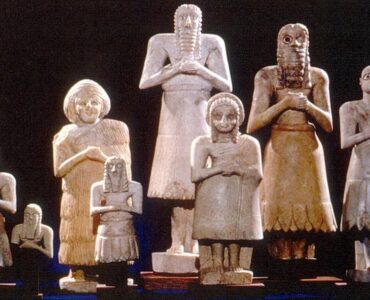
The Lesser Crusades
Crusade Of 1197
The Crusade of 1197, also known as the Crusade of Henry VI (German: Kreuzzug Heinrichs VI.) or the German Crusade (Deutscher Kreuzzug) was a crusade launched by the Hohenstaufen emperor Henry VI in response to the aborted attempt of his father, Emperor Frederick Barbarossa during the Third Crusade in 1189–90. Thus the military campaign is also known as the “Emperor’s Crusade” (echoing the name “Kings’ Crusade” given to the Third Crusade).
While his forces were already on their way to the Holy Land, Henry VI died before his departure in Messina on 28 September 1197. The emerging throne conflict between his brother Philip of Swabia and the Welf rival Otto of Brunswick made many higher-ranking crusaders return to Germany in order to protect their interests in the next imperial election. The nobles remaining on the campaign captured the Levant coast between Tyre and Tripoli before returning to Germany. The Crusade ended after the Christians captured Sidon and Beirut from the Muslims in 1198.
Background
On 2 October 1187 the Ayyubid sultan Saladin captured Jerusalem and large parts of the Crusader states. In an effort to reclaim the Outremer estates, the Third Crusade was launched by King Philip II of France, King Richard I of England, and Emperor Frederick I of the Holy Roman Empire in 1189. Frederick departed with a huge army, defeated a Seljuk contingent near Philomelion and captured Iconium, but then drowned in the Göksu River near Silifke in Cilicia.
Upon his death, Frederick’s German crusading host, totaling perhaps 12,000 men to 15,000 men, mostly disbanded and a much smaller contingent led by Frederick’s son Duke Frederick VI of Swabia continued to the Holy Land, where they joined the Siege of Acre. The crusade ended in the 1192 Treaty of Ramla signed by Sultan Saladin and King Richard Coeur de Lion, establishing a three-years armistice and allowing the Muslims to retain control over Jerusalem, while the Crusaders maintained Acre, Jaffa, and other key coastal cities.
Henry and Pope Celestine, from Liber ad honorem Augusti by Peter of Eboli, 1196 Henry VI, elected King of the Romans since 1169, succeeded his father Frederick and was crowned Holy Roman Emperor by Pope Celestine III in 1191. In his struggle with the Princes to enforce his succession, the tide turned in his favor when the returning crusader King Richard was captured in Austria and only released against an oath of allegiance and an enormous ransom. In 1194 Henry could assert the inheritance claims of his wife Constance by conquering the Kingdom of Sicily. By declaring a new Crusade to reconquer Jerusalem, Henry aimed at an agreement with Pope Celestine III to acknowledge his rule over Sicily. In 1195 the armistice concluded by King Richard ended. Sultan Saladin had already died in 1193 and a conflict over his succession raged in the Ayyubid lands. In view of these favorable developments, the emperor hoped to continue the momentum of the previous campaign.
Henry VI decided to take advantage of his father’s threat of force against the Byzantine Empire, affected by the rebellions in Serbia and Bulgaria as well as by Seljuk incursions. Emperor Isaac II Angelos had maintained close ties with the Sicilian usurper king Tancred of Lecce, he was overthrown in April 1195 by his brother Alexios III Angelos. Henry took the occasion to exact tribute and had a threatening letter sent to the Byzantine emperor in order to finance the planned Crusade. Alexius immediately submitted to the tributary demands and exacted high taxes from his subjects to pay the Crusaders 5,000 pounds of gold. Henry also forged alliances with King Amalric of Cyprus and Prince Leo of Cilicia.
Crusade Of 1197
802 – 006
https://discerning-Islam.org
Last Updated: 01/2022
See COPYRIGHT information below.



